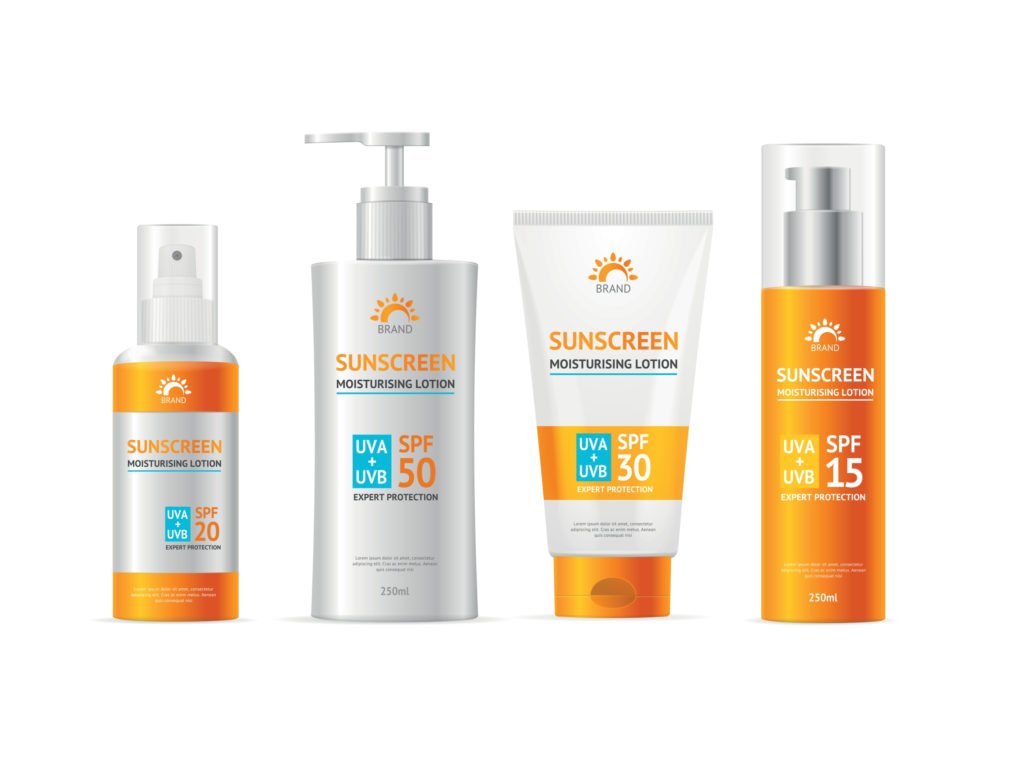Not all sunscreen is created equal and depending on your skin type, sensitivities, and overall health considerations, it’s a good idea to research anything you plan on applying to your skin. Before grabbing the cheapest bottle of sunscreen off the shelf, a basic understanding of the differences between mineral and chemical sunscreens will help you make a healthier choice for your skin!
How Do Mineral & Chemical Sunscreens Work?
While both mineral and chemical sunscreens prevent sunburns and are proven to reduce the risk of developing skin cancer, these two sunscreen types work very differently. Here’s how they protect your skin, and the pros and cons of each.
Mineral Sunscreens Reflect Harmful UV Rays
Mineral sunscreens, also known as “physical sunscreens”, contain either zinc oxide, titanium dioxide, or both to reflect UV rays away from the skin. Like a mirror for your skin, the tiny metal particles blended into the cream provide a reliable layer of sun protection. So, what are the benefits and downsides of mineral sunscreens?
- Since mineral sunscreens rest atop the skin rather than absorbing into the skin, your body is exposed to fewer chemicals. Look for mineral sunscreens that contain “non-nano” zinc oxide and titanium dioxide; these bigger metalized particulates are too large to enter your bloodstream. Nanonized mineral sunscreens may expose you to the risks associated with long-term metal toxicity.
- To be effective, a consistent coating of mineral sunscreen is necessary. The result is a visible, white film along the surface of the skin that provides instant protection. Depending on your aesthetic preferences, this may not be your ideal look!
- Mineral sunscreen is often a better option for anyone with skin sensitivities or chemical allergies. These products are also safe to apply on top of other skin products, and may be the perfect option if you’re concerned about the safety of products with a lot of chemicals!
Chemical Sunscreens Absorb And Transform UV Rays Into Heat Energy
Using the power of absorbed chemicals like oxybenzone, avobenzone, octisalate, and many others, incoming UV rays bind with these chemicals before being converted into heat energy. After this chemical reaction occurs, the produced heat is then released from your skin’s cells for a burn-free day in the sun.
- Since chemical sunscreens absorb into your skin, you are exposed to more chemicals that will enter your bloodstream. Despite this fact, many believe that the cancer-protective benefits outweigh the potential chemical risks.
- Chemical sunscreens are easily rubbed into the skin for a film-free, natural-skin tone appearance. After application, it takes around 20-30 minutes before these products will be effective.
- If you have certain skin allergies or chemical sensitivities, certain chemical sunscreens may aggravate your condition. Always test the sunscreen on a small section of skin first!
Early Detection Is The Best Prevention
If you’re concerned about your skin’s health, want to learn more skin-protective tips, or would like to schedule a skin cancer screening today, contact our family dermatology in Doylestown, PA for free information!

